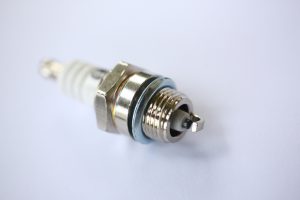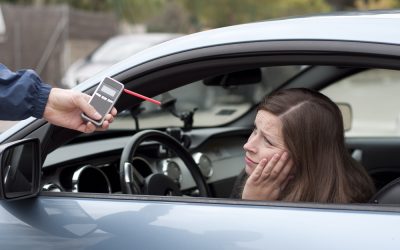
Convictions for Driving Under the Influence (DUI) can bring a variety of penalties, including installing an ignition interlock device in your vehicle/s. If you have been charged with a DUI offense, consult with a Los Angeles DUI attorney to ensure you have the best legal representation.
What Is an Ignition Interlock Device (IID)?
An ignition interlock device (IID) is a breathalyzer connected to your vehicle’s ignition system to prevent you from driving while intoxicated. The device is approximately the size of a cell phone and has two parts, a handheld device with a mouthpiece, and an electronic control unit (ECU) that connects to your car’s ignition system.
How Does an IID Work?
Before starting your car, you must blow into the mouthpiece on the handheld device. This device can detect alcohol, or lack of it, on your breath and communicates your breath alcohol content (BAC) to the ECU.
If the device measures even a slight amount of alcohol on your breath, the ECU will prevent your car from starting. As you drive, the device will require periodic retests. You have six minutes to complete the retest, which allows you time to pull over and safely blow into the mouthpiece.
The first retest generally occurs between five and fifteen minutes after you have started driving, and others follow about every 45 minutes. If the device detects alcohol on your breath during a retest, your vehicle will not shut down, but the failure will be reported to the court.
When Are IIDs Required in California?
For some offenses, a judge may order you to install an IID. For others, the judge must mandate the installation. Charges for which a judge may require an IID include first offenses violating:
- Vehicle Code 23152(a): Driving under the influence. If your BAC is.015% or higher, you are likely to receive the IID mandate.
- Vehicle Code 23152 (b): Driving with a BAC of 0.08% or higher.
- Vehicle Code 14601: Driving on a Suspended License, with violations related to DUI convictions.
- Vehicle Code 23612: Refusal to Submit to a Chemical Blood or Breath Test.
Charges for which a judge must order an IID include repeat DUI convictions and violations of Vehicle Code 23153: DUI Causing Injury.
How Long Do I Have to Keep an IID Installed?
If the judge requires the IID for a first DUI offense, you will probably have to keep the device for six months. For repeat DUI convictions, California law requires IID installations according to the following schedule:
- One year for second-time convictions
- Two years for third-time convictions
- Three years for four- (or more) time convictions
If you have a second DUI conviction involving injuries, you must keep the device for two years. If you incur a third, you must keep it for three. If you are not convicted by the court but are found liable by the DMV, you will usually be required to keep the IID for one year, even for repeat offenses.
How Can I Obtain and Install an IID?
You cannot install the IID yourself and must have a device installed on every car you own or drive, with the exceptions of motorcycles or company-owned vehicles.
Check the California DMV list of authorized IID manufacturers. These manufacturers can offer information on facilities that IID installations.
Before you have the device installed, confirm the installer has a valid license from the Bureau of Automotive Repair (BAR) or Bureau of Household Goods and Services (BHGS).
What Is the Cheapest IID?
To find the least expensive IID, you will have to do some comparison shopping by contacting the DMV-authorized IID manufacturers. On average, the device costs about $70-$100. Some companies require a $75-$100 installation fee, while others do the installation for free.
For monthly use, the average rental fee is $70-$100 or about $3 per day. You may have to pay calibration and maintenance fees as well, as California requires you to have the device serviced every 60 days. You will also have to cover the $103 DMV administrative fee.
What if I Cannot Afford an IID?
California requires IID installers to provide reduced fees for those with income levels within the federal poverty level. If you fit this category, you will need to prove it with documentation such as your federal income tax return from the previous year, income statements, or proof of unemployment benefits.
If you are not eligible for reduced fees and cannot afford the IID, you will need to seek other means of transportation.
Is an IID Foolproof?
California IIDs require specific breath patterns, require random samples, and have cords too short to reach passenger seats. These design factors work to ensure only the driver can provide the sample. Additionally, the device records disconnection attempts or other tampering attempts, all engine starts and stops, and all breath test results.
It is a crime to ask another person to offer a breath sample. If there is evidence of tampering with your device, you may face additional penalties or be required to keep the device for a longer time period.
There is a very slight chance of registering a false positive if you use mouthwash or eat candy or other items with alcohol ingredients. If this happens, rinse your mouth with water, which is usually enough to remove the small traces of alcohol left in these instances, and retest. After a positive test, you have the chance to retest quickly.
What if I Refuse to Install an IID?
If you have been ordered to install an IID and are caught driving, you will receive a probation violation and may face jail time for violating a court order, a driver’s license violation, and your original DUI conviction.
Contact a Los Angeles DUI Attorney
If you or a loved one is facing a DUI conviction, contact a Los Angeles DUI lawyer right away. Your lawyer will ensure you are treated fairly by the court system and will help you comply with IID requirements.






